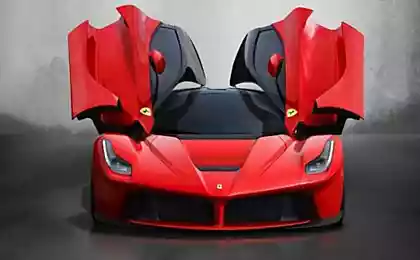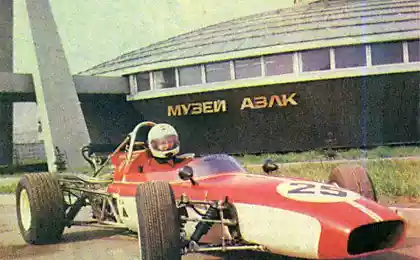718
Ferrari, who flies (26 photos)
The fact that the Italian company Piaggio Aero Industries SpA released the aircraft, which has no analogues in the world, there is nothing surprising.
It turned out that the aircraft, nearly destroyed the company, it is saved. In 1998
aircraft "demonstrator» Avanti interested Piero Ferrari - the owner of the well-known brands of cars of the same name, and the team, "Formula 1".
The Miser at the official control actions IAM Rinaldo Piaggio, he founded a new company Piaggio Aero Industries SpA with management offices in the United States and France.
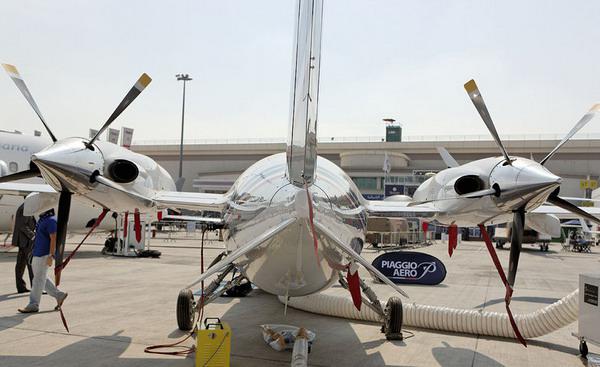
Then he appointed Piaggio 180 Avanti main air cab of his team. And it's gone! Italian aircraft Piaggio P180 Avanti immediately attracts attention because of its unusual design.
The innovative solutions of designers firm Piaggio, adopted in the development of Avanti, are more common in military aviation.
Rate Piaggio was on the latest developments in the field of aerodynamics, and in this case the design of the aircraft and the technology is fully justified themselves.
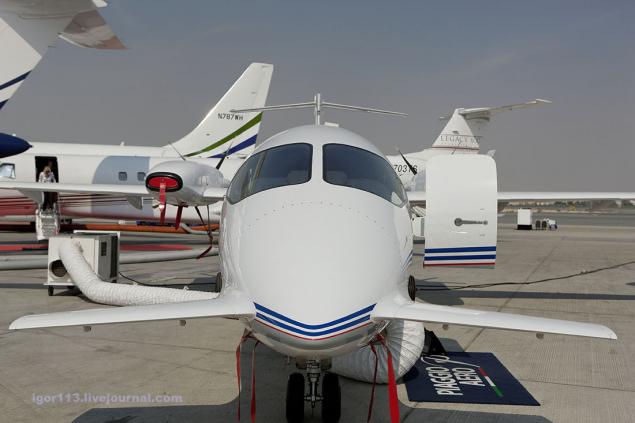
The first project of the plane appeared in the early eighties. Before the designers was to create a plane, not inferior in speed turbojet engines and at the same time possessing economical turboprop aircraft.
For ten years, Piaggio designers have been working on the creation of modern aircraft. It was only the beginning of nineties, the project entered the final stage. As a result of this work it was achieved speed jet Cessna CJII the consumption of fuel at Beechcraft King Air 350.

This means that the cruising speed is 750 Avanti kmchas, at a flow rate of fuel, equal to half the value characteristic for jet aircraft grade Cessna CJII.
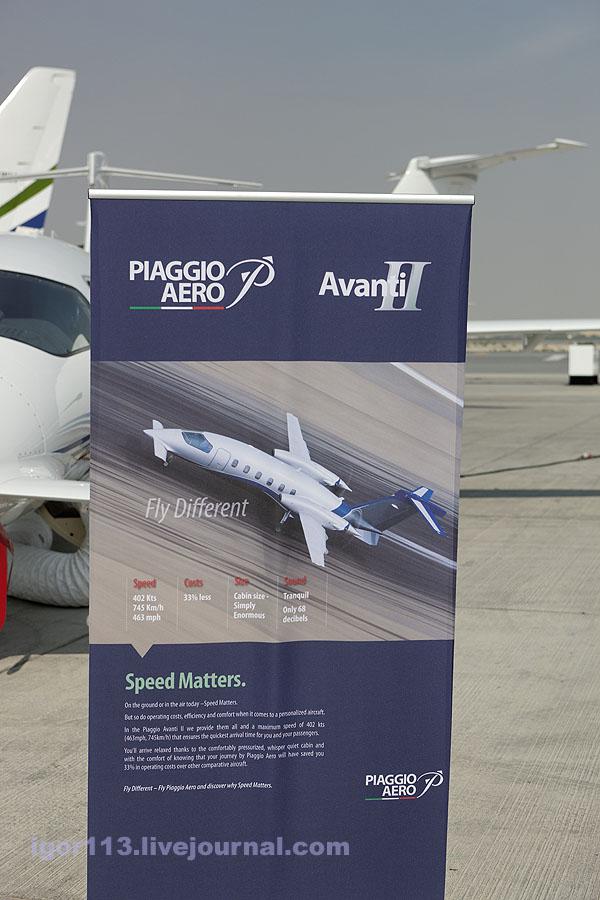
The plane is made by the scheme monoplane with a forward horizontal stabilizer, T-tail, and the power plant with a pusher propeller. Fuselage - laminar flow. Despite some external similarity with aerodynamic scheme "duck", the plane does not refer to this configuration as canards have no control surfaces (elevators and areas are located in the horizontal stabilizer tail T-tail, ailerons - the wings, as well as in planes normal aerodynamic scheme).
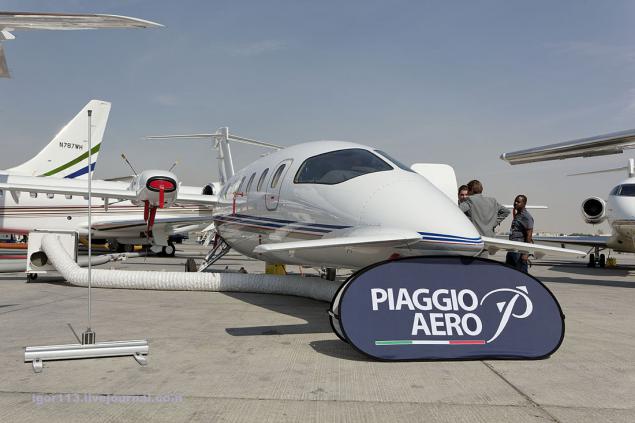
The main structural feature of the aircraft is that it has three airfoils. The main wing is set a little higher position sredneplana and the main spar passes behind the passenger cabin. The wing has a small cross V at 2 degrees. The elevator and T-tail are second surface creates the lift force, moreover, they are conventional control surfaces. Nasal wheel provides positive component in addition to the lift force created by the wing. This reduces the size of the wing, and therefore the overall weight and drag.

As the power plant were to be used turboprop engines Pratt & Whitney Canada PT6A-61, but later they were rejected in favor of the more powerful PT6A-66A engine. Each of these five-blade rotates vane-reversing Hartzell propeller with spinner. Engine nacelles are made of composite materials.
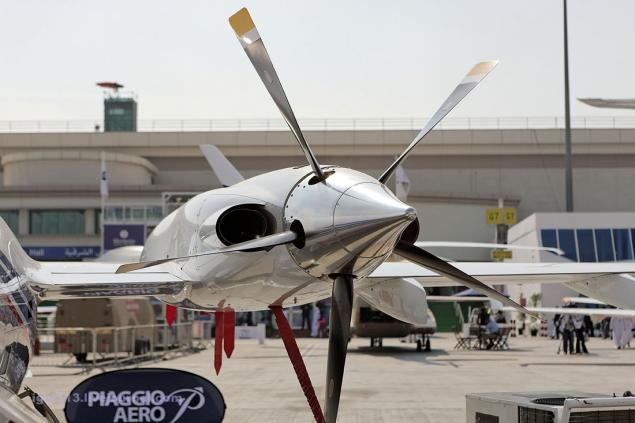
The aircraft structure Avanti composites are used in large numbers. All of these design elements are manufactured by companies Sikorsky and Edo, wings and tail surfaces - of Piaggio in Genoa, and the front part of the fuselage is the company responsible Paggio Aviation in Wichita. Final assembly is done in Italy.

The assembly of the first aircraft R.180 began at the plant Finale Laine of Piaggio in 1986., And the first flight took place 23 September 1986. Thereafter, 14 May 1987., Flew on the second prototype. Avanti aircraft was certified by the Italian authorities in March 1990., And in May of the same year was released the first production car. Last certification barrier was overcome in the US in October 1990. The first deliveries to customers began in 11 months. By the beginning of 1993., Despite his radical new appearance and advanced design, it was delivered only 20 aircraft copies Avanti.

* Length: 14.41 m.
* Wingspan: 14.03 m.
* Height: 3.97 m.
* Wing area: 16 m2.
* Thrust-weight ratio: 0.24 kW / kg.
* Engines: 2 turboprop Pratt & Whitney Canada PT6A-66, 634 kW each.
* Takeoff: 869 m.
* Mileage: 872 m.
* Crew: 1-2 pilots.
* Seating capacity: 9 people.
* Interior: 1.75 m (height) x 1.85 m (width) x 4.45 m long.
* Base price: $ 4,725,000.

* Maximum speed: 732 km / h.
* Cruising speed: 593 km / h.
* Ceiling: 12,500 m.
* Rate of climb: 899 m / m (at sea level).
* Range of flight: 2592 km (at an altitude of 11,900 m with air navigation margin).

* Empty weight: 3400 kg.
* Maximum takeoff weight: 5239 kg.
* Takeoff weight: kg 5489.
* Commercial downloads: 907 kg.
* Useful load: 1 860 kg.
* Wing loading: 327 kg / m2.
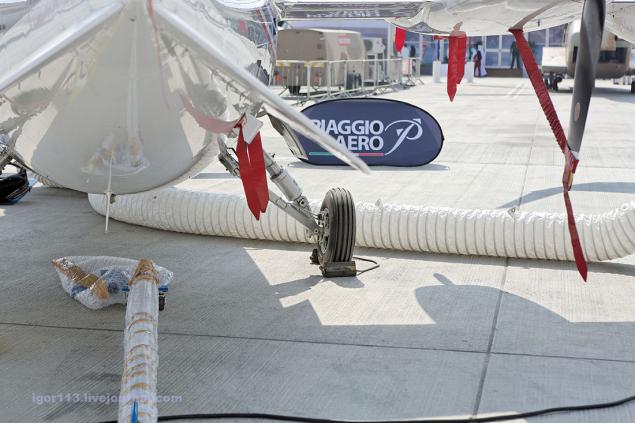
Here we actually Avanti II:
Avanti II has been certified by the European Aviation Safety Agency (EASA) in October 2005 and was the first aircraft to a private buyer from Switzerland in October 2005 were received orders for more than 120 such samoletov.50y Avanti II was produced in October 2008.
The aircraft is equipped with a hydraulically retractable tricycle-type chassis with single-wheel main landing gear and

double nose wheel. The wheels are equipped with tires Goodrich, and driving the carboxylic hydraulic multi-disc brakes.

Avanti II was improved electronics, more speed and greater load due to increased thrust-weight ratio, and a higher level of comfort in the cab. Working height of 12,500 meters in the aircraft allows you to fly above the weather.
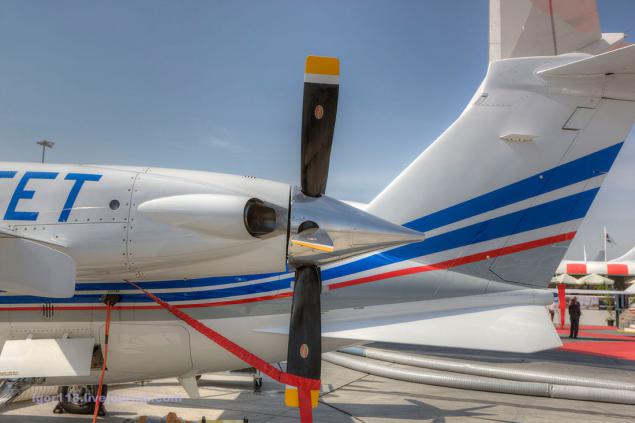
...

Make your way into the interior
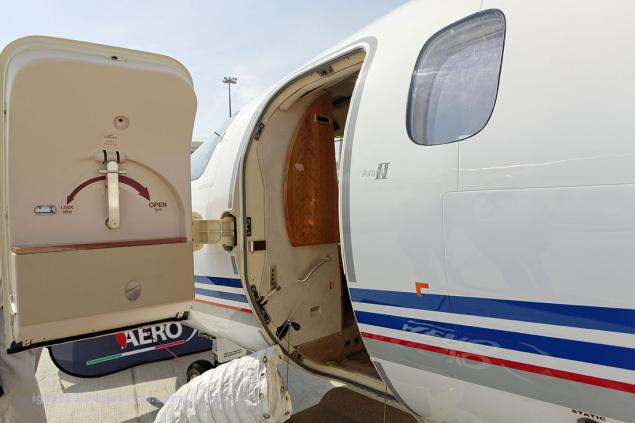
among the most comfortable aircraft of its class passenger cabin. This volume of the cabin and the ceiling height is only found on airplanes of a higher class. The passenger cabin is conveniently located nine people. His height - 175 cm width - 183 cm.

On the left side there is a bar, wardrobe, air conditioning freon.
First-class seats, a variety of options for interior trim, comfortable bathroom, where you can not stand ducking, climate control - increasing comfort trivia satisfy the most demanding passengers.
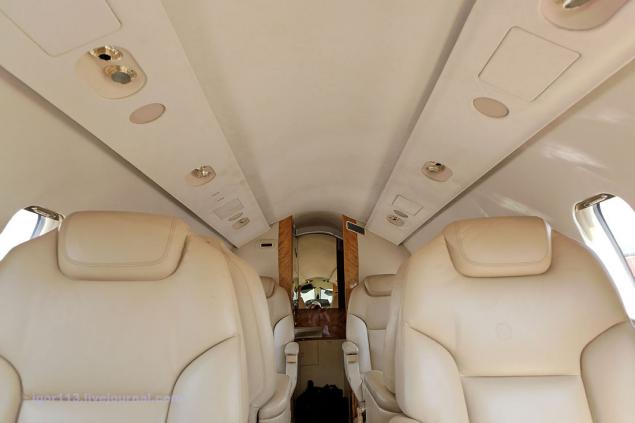
Due to the removal of screws to the tail of the aircraft is provided by a low noise level in the cab (about 68 decibels).
The main cabin is pressurized (up to 7000 meters in the cabin pressure is maintained in sea level) and is fitted with air conditioning, kitchen and folding tables. Emergency exit is located in front of the starboard and ladder - on the left side.

Dimensions of the cabin:
* Cabin length: 4.3 m
* Width of the cabin: 1.86 m
* Cabin height: 1.77 m
* Number of passengers: 6
* Trunk volume: 1.3 m3
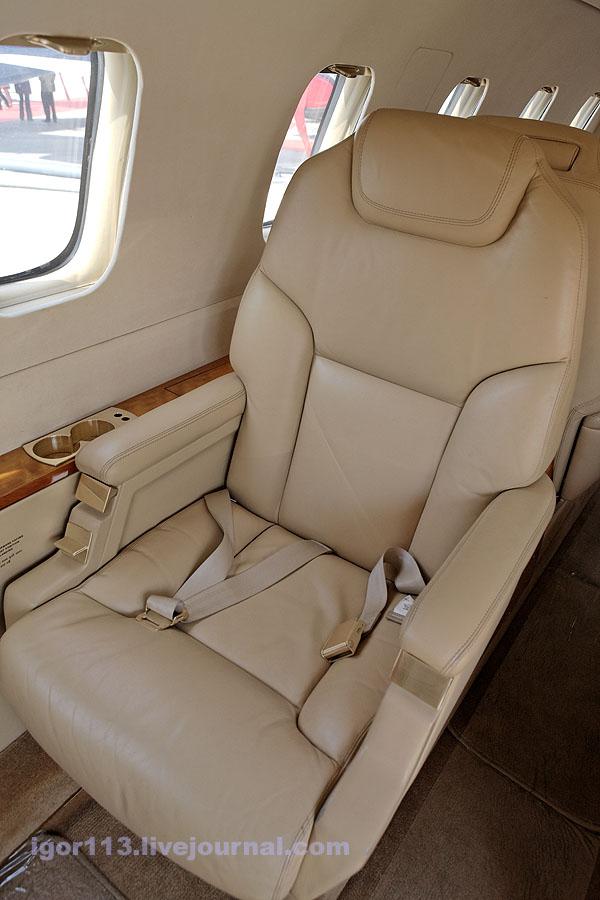
Avanti instrumentation combined into an integrated complex, it is easy to use and is certified for single-pilot operation.

The cockpit is equipped with flight instruments with cathode ray display (EFIS), which comes standard with a three-monitor cathode-ray tube (CRT) (this applies to the first avanti, and navigation system and Collins weather radar.

The central panel
Avionics Avanti II is based on Rockwell Collins ProLine 21 suite, and includes three 10-inch and 8-inch LCD display, flight management system FMS 3000 and heading reference system AHS 3000.
Radar and navigation systems include color radar Collins WXR-840 and two Collins VIR-32 VOR, Collins ADF-462 automatic direction finder, distance measuring equipment DME-42 and a radar altimeter ALT-55B.
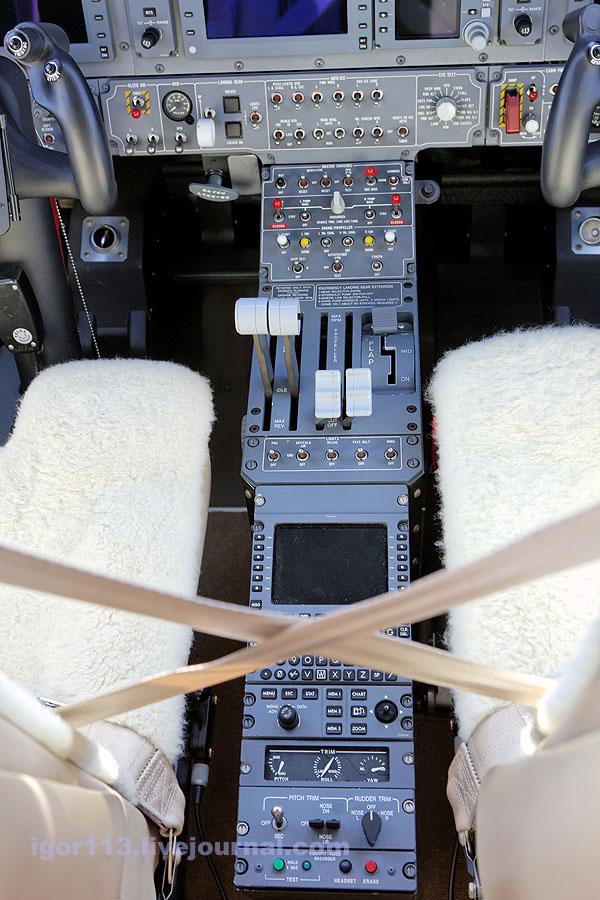
Workplace KVSa

Workplace 2nd pilot
via ru_aviation

Source:
It turned out that the aircraft, nearly destroyed the company, it is saved. In 1998
aircraft "demonstrator» Avanti interested Piero Ferrari - the owner of the well-known brands of cars of the same name, and the team, "Formula 1".
The Miser at the official control actions IAM Rinaldo Piaggio, he founded a new company Piaggio Aero Industries SpA with management offices in the United States and France.

Then he appointed Piaggio 180 Avanti main air cab of his team. And it's gone! Italian aircraft Piaggio P180 Avanti immediately attracts attention because of its unusual design.
The innovative solutions of designers firm Piaggio, adopted in the development of Avanti, are more common in military aviation.
Rate Piaggio was on the latest developments in the field of aerodynamics, and in this case the design of the aircraft and the technology is fully justified themselves.

The first project of the plane appeared in the early eighties. Before the designers was to create a plane, not inferior in speed turbojet engines and at the same time possessing economical turboprop aircraft.
For ten years, Piaggio designers have been working on the creation of modern aircraft. It was only the beginning of nineties, the project entered the final stage. As a result of this work it was achieved speed jet Cessna CJII the consumption of fuel at Beechcraft King Air 350.

This means that the cruising speed is 750 Avanti kmchas, at a flow rate of fuel, equal to half the value characteristic for jet aircraft grade Cessna CJII.

The plane is made by the scheme monoplane with a forward horizontal stabilizer, T-tail, and the power plant with a pusher propeller. Fuselage - laminar flow. Despite some external similarity with aerodynamic scheme "duck", the plane does not refer to this configuration as canards have no control surfaces (elevators and areas are located in the horizontal stabilizer tail T-tail, ailerons - the wings, as well as in planes normal aerodynamic scheme).

The main structural feature of the aircraft is that it has three airfoils. The main wing is set a little higher position sredneplana and the main spar passes behind the passenger cabin. The wing has a small cross V at 2 degrees. The elevator and T-tail are second surface creates the lift force, moreover, they are conventional control surfaces. Nasal wheel provides positive component in addition to the lift force created by the wing. This reduces the size of the wing, and therefore the overall weight and drag.

As the power plant were to be used turboprop engines Pratt & Whitney Canada PT6A-61, but later they were rejected in favor of the more powerful PT6A-66A engine. Each of these five-blade rotates vane-reversing Hartzell propeller with spinner. Engine nacelles are made of composite materials.

The aircraft structure Avanti composites are used in large numbers. All of these design elements are manufactured by companies Sikorsky and Edo, wings and tail surfaces - of Piaggio in Genoa, and the front part of the fuselage is the company responsible Paggio Aviation in Wichita. Final assembly is done in Italy.

The assembly of the first aircraft R.180 began at the plant Finale Laine of Piaggio in 1986., And the first flight took place 23 September 1986. Thereafter, 14 May 1987., Flew on the second prototype. Avanti aircraft was certified by the Italian authorities in March 1990., And in May of the same year was released the first production car. Last certification barrier was overcome in the US in October 1990. The first deliveries to customers began in 11 months. By the beginning of 1993., Despite his radical new appearance and advanced design, it was delivered only 20 aircraft copies Avanti.

* Length: 14.41 m.
* Wingspan: 14.03 m.
* Height: 3.97 m.
* Wing area: 16 m2.
* Thrust-weight ratio: 0.24 kW / kg.
* Engines: 2 turboprop Pratt & Whitney Canada PT6A-66, 634 kW each.
* Takeoff: 869 m.
* Mileage: 872 m.
* Crew: 1-2 pilots.
* Seating capacity: 9 people.
* Interior: 1.75 m (height) x 1.85 m (width) x 4.45 m long.
* Base price: $ 4,725,000.

* Maximum speed: 732 km / h.
* Cruising speed: 593 km / h.
* Ceiling: 12,500 m.
* Rate of climb: 899 m / m (at sea level).
* Range of flight: 2592 km (at an altitude of 11,900 m with air navigation margin).

* Empty weight: 3400 kg.
* Maximum takeoff weight: 5239 kg.
* Takeoff weight: kg 5489.
* Commercial downloads: 907 kg.
* Useful load: 1 860 kg.
* Wing loading: 327 kg / m2.

Here we actually Avanti II:
Avanti II has been certified by the European Aviation Safety Agency (EASA) in October 2005 and was the first aircraft to a private buyer from Switzerland in October 2005 were received orders for more than 120 such samoletov.50y Avanti II was produced in October 2008.
The aircraft is equipped with a hydraulically retractable tricycle-type chassis with single-wheel main landing gear and

double nose wheel. The wheels are equipped with tires Goodrich, and driving the carboxylic hydraulic multi-disc brakes.

Avanti II was improved electronics, more speed and greater load due to increased thrust-weight ratio, and a higher level of comfort in the cab. Working height of 12,500 meters in the aircraft allows you to fly above the weather.

...

Make your way into the interior

among the most comfortable aircraft of its class passenger cabin. This volume of the cabin and the ceiling height is only found on airplanes of a higher class. The passenger cabin is conveniently located nine people. His height - 175 cm width - 183 cm.

On the left side there is a bar, wardrobe, air conditioning freon.
First-class seats, a variety of options for interior trim, comfortable bathroom, where you can not stand ducking, climate control - increasing comfort trivia satisfy the most demanding passengers.

Due to the removal of screws to the tail of the aircraft is provided by a low noise level in the cab (about 68 decibels).
The main cabin is pressurized (up to 7000 meters in the cabin pressure is maintained in sea level) and is fitted with air conditioning, kitchen and folding tables. Emergency exit is located in front of the starboard and ladder - on the left side.

Dimensions of the cabin:
* Cabin length: 4.3 m
* Width of the cabin: 1.86 m
* Cabin height: 1.77 m
* Number of passengers: 6
* Trunk volume: 1.3 m3

Avanti instrumentation combined into an integrated complex, it is easy to use and is certified for single-pilot operation.

The cockpit is equipped with flight instruments with cathode ray display (EFIS), which comes standard with a three-monitor cathode-ray tube (CRT) (this applies to the first avanti, and navigation system and Collins weather radar.

The central panel
Avionics Avanti II is based on Rockwell Collins ProLine 21 suite, and includes three 10-inch and 8-inch LCD display, flight management system FMS 3000 and heading reference system AHS 3000.
Radar and navigation systems include color radar Collins WXR-840 and two Collins VIR-32 VOR, Collins ADF-462 automatic direction finder, distance measuring equipment DME-42 and a radar altimeter ALT-55B.

Workplace KVSa

Workplace 2nd pilot
via ru_aviation

Source:









